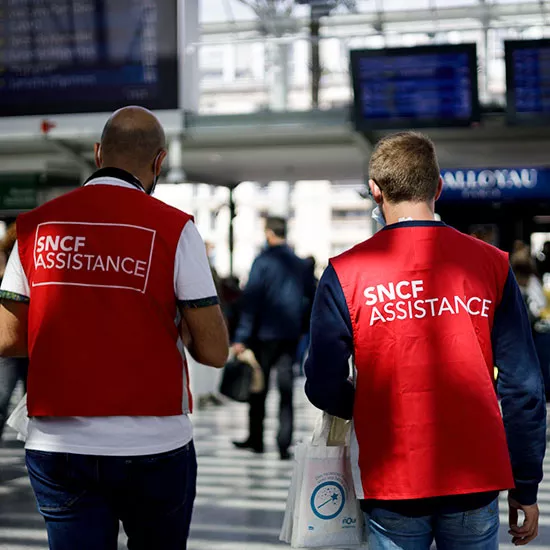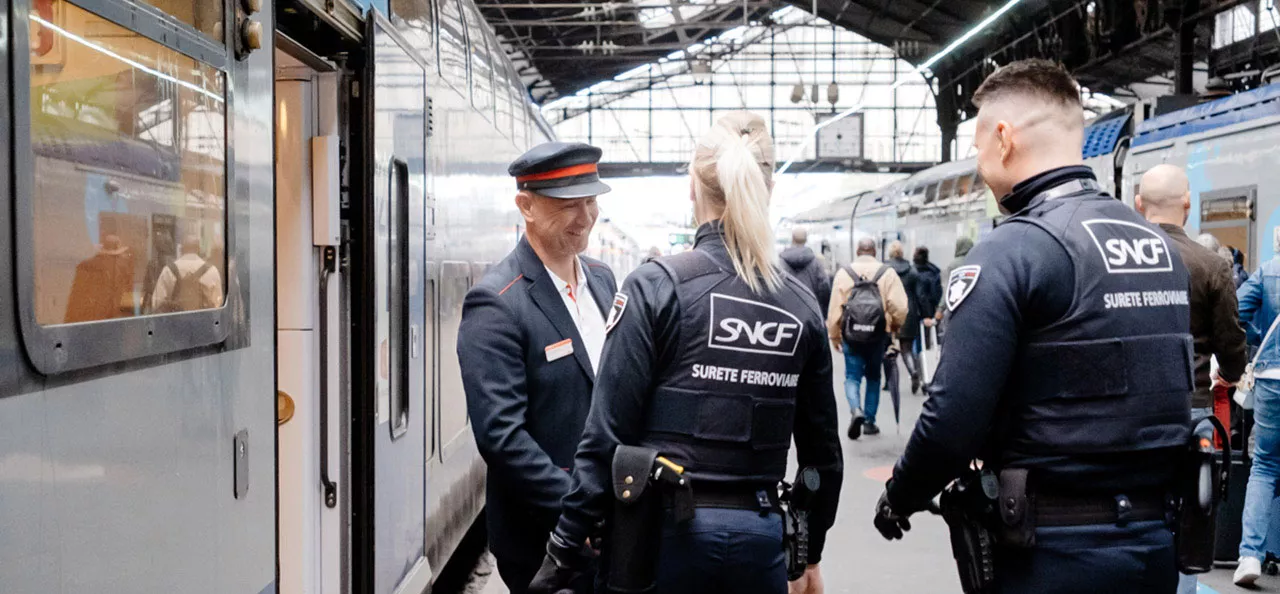The nuts and bolts of passenger transfers
“Ladies and gentlemen, following a system malfunction, we will be transferring you to another train.” If you’ve heard this message, then you’ve experienced a “transfer”. When do they happen and how do they work?
Different types of passenger transfer
Whatever the reason for the delay, SNCF always makes every effort to ensure you reach your destination. If your train cannot leave the station or continue its journey, you might have to disembark and board another train or coach to get there. We call this a “passenger transfer”.
It can happen in the station—in this case you change trains using the platforms. But it can also happen in the middle of the track. If that happens, you’ll transfer:
- Either “side by side” i.e., you move to an adjacent train using special ladders to disembark and board. In these cases, traffic is suspended on both tracks.
- Or “nose to tail”, i.e., you disembark from your TGV and walk along the track to the replacement train in front or behind on the same track. When this happens, other trains continue to run on the adjacent track, but at reduced speed.
Whatever the type of transfer, for your safety, you must strictly follow the instructions provided by the train manager and customer service staff on site.

Safety first!
We have to implement a special safety procedure when transferring you from one train to another. The train manager will assist you and make sure all safety measures are followed:
- You must stay within the “passenger transfer zone” when disembarking in the middle of the tracks—always follow the pathway and instructions provided by the train manager or assisting personnel.
- We pay special attention to children, the elderly, and disabled passengers, offering help with disembarking and boarding, and carrying their luggage if necessary.
- On-site staff manage passengers. This typically includes the train manager, SNCF Assistance volunteers, and customer service agents if the transfer occurs in a station.
At nighttime or in rainy conditions, we implement additional safety measures and promptly call in emergency services. These include firefighters, security officers (SUGE), our rapid assistance teams (EAR), and civil protection rescue units (in France, these Civil Security organizations are recognized as serving the public interest).
Who are our “red vest” agents?
These are SNCF employees who volunteer to assist on-site teams during service disruptions. Onboard trains, they assist the train manager by compiling an inventory of passengers with connections or distributing meal boxes. They’re there to support and reassure you.

And who are our EAR teams?
SUGE and customer service agents make up our rapid assistance team (EAR). They respond quickly and are available around the clock to guide, inform and assist you during service disruptions.
Share the article